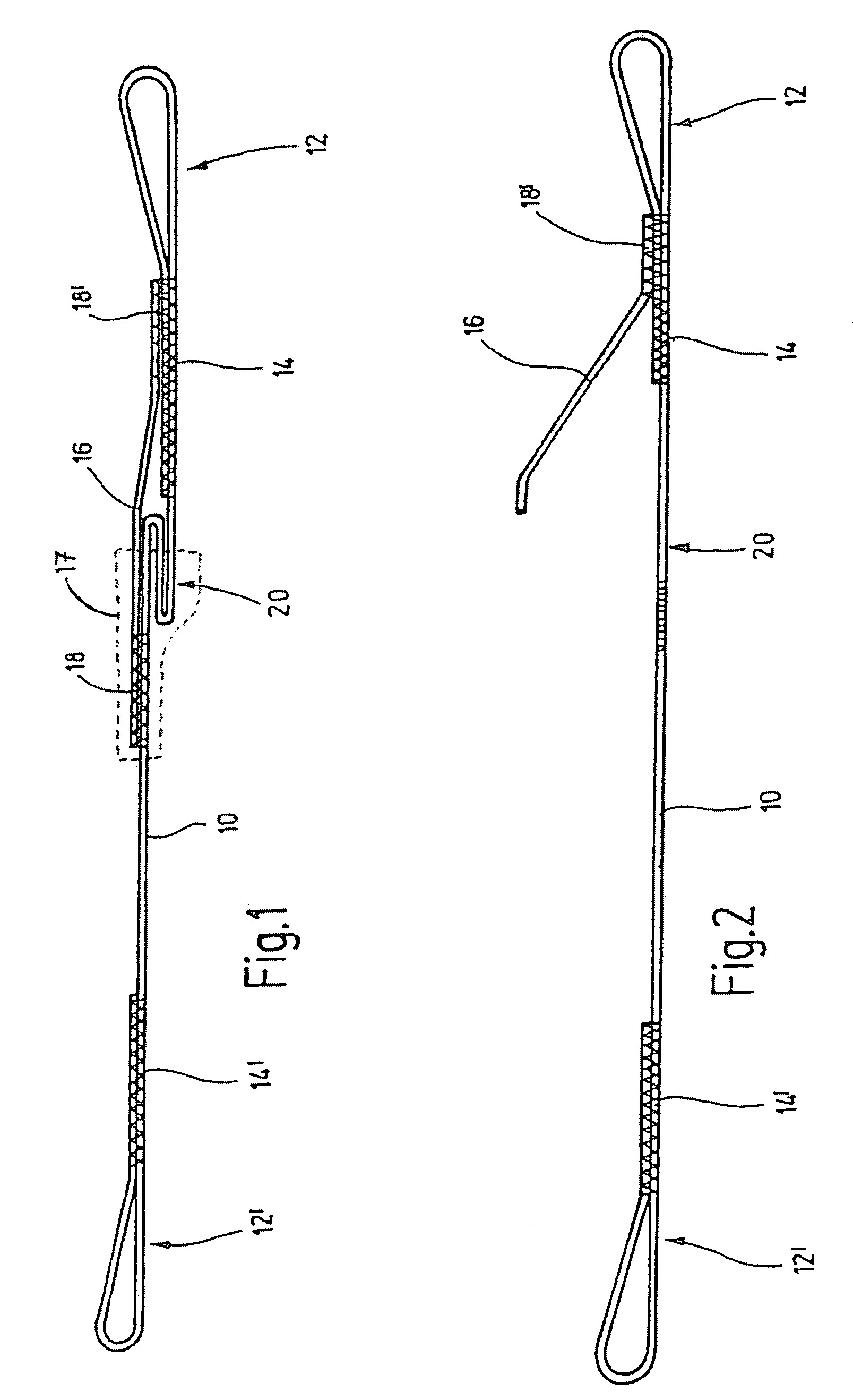Belt device
a belt or webbing technology, applied in the direction of driving belts, v-belts, plant protection, etc., can solve the problems of high work intensity and inspection can only take place in the immediate vicinity
- Summary
- Abstract
- Description
- Claims
- Application Information
AI Technical Summary
Benefits of technology
Problems solved by technology
Method used
Image
Examples
Embodiment Construction
[0018]The belt device, as shown in the drawing, essentially comprises a belt 10, whose ends are turned over to form loops 12, 12′, wherein the end parts of the belt are fastened by seams 14, 14′ on those parts of the belt which are at a distance from the ends. The length of the seam area, the stitching material, as well as the stitching pattern, influence the load bearing capacity of the fastenings. The belt device is intended to be placed around the tree part that is to be secured or supported. Loops 12, 12′ serve to attach a rope or a similar object, which joins together two of the shown belt devices and thus forms a load carrying system in which a weak or damaged tree part is supported by a healthy or stronger part of the tree.
[0019]An indicating element 16 is arranged in the region of the loop 12; this indicating element may also be a piece of belt and is fastened to the belt 10 with its ends. The fastening takes place through seams 18, 18′, wherein the load carrying capacity of...
PUM
 Login to View More
Login to View More Abstract
Description
Claims
Application Information
 Login to View More
Login to View More - R&D
- Intellectual Property
- Life Sciences
- Materials
- Tech Scout
- Unparalleled Data Quality
- Higher Quality Content
- 60% Fewer Hallucinations
Browse by: Latest US Patents, China's latest patents, Technical Efficacy Thesaurus, Application Domain, Technology Topic, Popular Technical Reports.
© 2025 PatSnap. All rights reserved.Legal|Privacy policy|Modern Slavery Act Transparency Statement|Sitemap|About US| Contact US: help@patsnap.com


